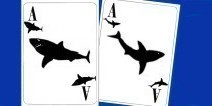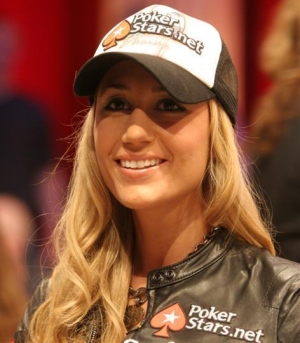|

Join our Newsletter
& get our free guide Starting Hands Revealed
We hate spam too!
We value your privacy and never share your email. All our emails have an opt-out link. Click it, and you will never hear from us again. pokerstars marketing code
in various languages
pokerstars review
in various languages
|
Tools for hand range calculationHand Ranges: Tools for Analysis
But in order to accurately pin an opponent on a range, you need lots of information; so you'll want to use all the poker software tools you can get your hands on. You won't have to drop a ton of stacks to get the latest software. A lot of it is free or cheap. You just need to know what you're looking for and where to find it. Let's take a look at the tools you'll need to calculate hand ranges, sorted into two broad categories: on-table tools and off-table tools.
On-Table Tools for Hand Range AnalysisThere are tons of on-table tools out there that help you collect information about your opponents as you play. Some of them don't even require you to be playing in order for information gathering to work; they mine for data as long as your poker client is open. PokerEdge and Holdem Manager are the most popular data collection tools available. They basically keep track of the hands you and your opponents play, and compile statistics that reveal patterns in playing styles. You can use these statistics to analyze both yours and your opponent's poker strategies. When you see statistics like VPIP and PFR% thrown around in strategy articles and on forums, you're dealing with data that tracking programs collect. These stats help you to narrow down your opponent's range tendencies in different spots, saving you from having to make inaccurate guesses based on incomplete information. A tracking program is a great way to consolidate all your hand histories, making off-table hand analysis easy as pie. Without a tracking program, you can still review your past sessions; but a tracking program helps you to make sense of past spots, and provides invaluable insight into your game and your opponents you wouldn't otherwise have. It's pretty much a necessity to know a player's basic stats if you want to figure out his range structures accurately, so a tracking program should be first on your list of tools to get. The two most popular are PokerEdge and Holdem Manager that are both excellent; they do cost money, but not a lot. You can get a small-stakes license for Holdem Manager that only costs about $50, but it only works up to 50NL; a full license costs $89.99. For PokerEdge, it depends on what of license you get, but you can get a free five day trial. 90 bucks might seem steep for a piece of software. But if you're serious about improving your game, a tracking program is a great investment. You'll be at a disadvantage if you don't use one, because all your opponents will be. Note that both pieces of software offer a free trial period; so download each and figure out which one you like best before you buy. Off-Table Tools for Hand Range AnalysisWhen you're reviewing past hands, you'll sometimes need to make calculations that are math-intensive. That's where off-table tools come into play. We write a lot about hand ranges, and often talk about things like how an opponent's YY% PFR statistic translates into such and such an X range. We use an equity calculator called PokerStove to help us make such translations easily, and you should too. PokerStove is one of the most useful tools ever coded, and the best thing about it is that it's free. The gist of the program is that it runs equity simulations of hand ranges, which would be almost impossible to calculate by hand. Say that you are reviewing a hand where you have got KsJc preflop, and you estimate your opponent's range to be 12% of all hands. Just plug your hand into a player field on PokerStove, plug your opponent's range into another, and run a hand simulation; the program kicks back the hand equity for both players. Your KJo has ~37% equity against your opponent's 12% range (which PokerStove tells us is {77+, A9s+, KTs+, QTs+, JTs, ATo+, KJo+}) to use the above example. So in a vacuum, your opponent wins ~62% of the time, and you are left biting your nails the other ~37% of the time. Knowing this helps will good players infinitely in their quest to craft a perfect strategy. And it will help you too. Again, your opponents will be making hand range calculations using software like PokerStove. So it's a necessary tool for you if you want to stay competitive.
This is what the best players know and do, like Vanessa Rousso, Liv Boeree, and many others. And many of these great poker players know that one of the best place to play online poker is pokerstars. If you sign up at pokerstars, you can observe Vanessa Rousso playing poker there. Her username is 'LadyMaverick'. Or you can even play with her, if you dare. Or just play at the microstakes. Whatever you wish, the options are enormous there.

|










